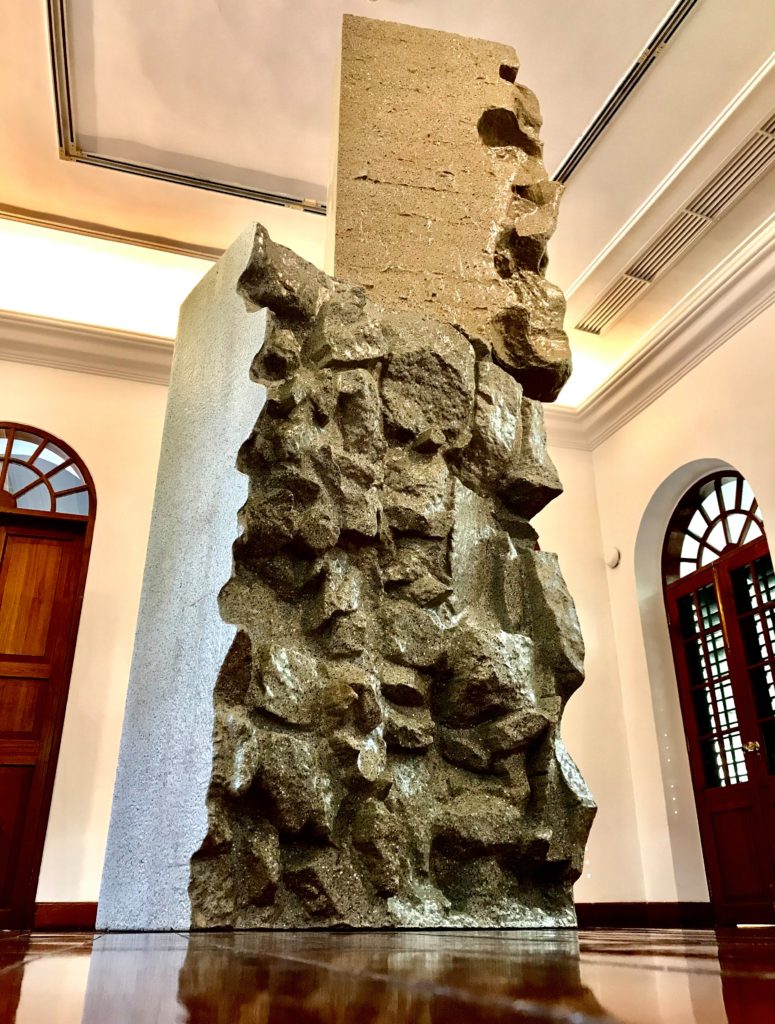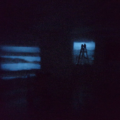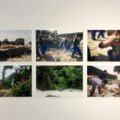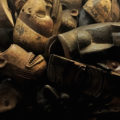Imagining the Free Land – On Cai Guojie’s Half-Field Plan
by Kam Tou Pang
Can we still imagine a land that is free and available to all in this neoliberal regime, where land is always already owned and occupied by the powerful and the rich? Indeed, the artist Cai Guojie is offering a way-out. His decade-long “Half-Field Plan” is an art project pondering on land ownership. By taking land boundary seriously, it reveals its immense potentiality and eventually envisions a community of commons united by an utopian pursuit for a free land.
Cai’s works revolve around the highly codified cadastral map, where land is defined and divided by plain lines of boundary in virtue of urban governance. He problematises this reductive approach in portraying reality, and argues that since the terrestrial spaces at either side of the boundary must not overlap, hence the boundary in question should be two juxtaposing lines instead of one, between which exists an ‘interspace’ infinitely approaching zero, a microscopic ‘margin of error’ not to be ignored. In a way he holds that the cadastral map is in fact ‘the map of errors’, on which all prescribed lines of land boundary are ‘inaccurately’ describing the reality and rather, only depicting the land errors. Anchored on the systemic absurdity, ‘Half-Field Plan’ further destabilises the existing land distribution status quo by inviting audience to purchase the abstract linear land nestled on the boundaries. Such an intervention is in itself a tongue-in-cheek sarcasm against the very commercial practice of real estate that always excludes the underprivileged.
What Cai is telling us is that boundary is where hope can be found. If the developed, used and occupied land is the ‘actualised’ land, then this ‘linear land’ perching on the boundary can be considered as the ‘virtual’. A place that is uncoded, unrealized, present yet not exactly existing in reality, essentially beyond the matrix of power. It reminds of ‘potentiality’ lauded by Giorgio Agamben, which possesses ‘the power to not be’. Such virtual land on the boundary is truly autonomous and inexhaustible, imbued with a potentiality that gestures to futurity. José Muñoz especially emphasised the importance of potentiality for the (queer) marginalised and pointed it helps reject the impasse of ‘now and here’, carrying an utopian performativity and always embracing the hopeful ‘then and there’.
Eventually, ‘Half-Field Plan’ presents us a subversive, new paradigm here. Out of a sudden all lines charted on the cadastral map become lines of flight to the shapeless future; the potentiality of land boundary is thus activated and blossoms in our consciousness. In fact, the entire project can be considered as an act of Deleuze and Guatarri’s ‘deterritorialization’: the existing logic and order of land distribution is shaken, with the virtual lands facilitating new becomings. Each land boundary acts like a growing vine, awaiting new relations at its open ends to connect and eventually weave new networks via non-hierarchical, rhizomatic routes. It can be understood that anyone or anything that participates in any point of the project becomes a part of the resistance assemblage, be it the spectator-buyer of the land interspace, the pseudo-land certificate upon purchase(including its right of transferal and future transferees), the exhibition venue and so on.
In fact, I argue that the participatory dimension of ‘Half-Field Plan’, albeit parodic and game-like, facilitates the construction of a ‘commons-land’ community. Even though the interspaces Cai auctions are unusable and virtual, the participating public is allowed to reconnect with the alienated land through collaborative performance of choosing land, making contracts and bringing the symbolic certificate home as their property, exercising the (virtual) right of land ownership mostly for their very first time in life. As a result, the commons (a term I favour to contrast the ruling class) are invited to collectively experience the political nature of this artificial boundary. They are encouraged to imagine a space and time free from the rein of power and capital with the terrestrial potentiality, and perhaps someday, that truly free space and time of future might come. It is obvious that over the years, Cai Guojie has engaged the commons in numerous ways to make use of potentiality and spread that steadfast utopian hope for a free land. In ‘The Length of Berlin’, he auctioned the recoded interspaces along the fallen Berlin Wall on the internet. His ‘Home’ project invited refugees in Paris to draw the contours of their lost homes and sell them, while ‘Living in Heaven’ asked participants to place small red flag to encircle their dream territory on the clay model of an imaginary, undeveloped island in Macau.
At the core, ‘Half Field Plan’ challenges the legitimacy of the current land distribution and the resulting hegemony. Through identifying that utopian opening on the boundary, Cai Guojie resolves to bring back to the center stage the long rejected ‘margin of error’. The sculptural series ‘Error Monument’ is one of his most mesmerising creations. He recast the actual spatial margin of error that hides behind a concrete wall of a friend’s apartment. Now a giant ‘mistake’, which is in essence the discrepancy of measurement between the architectural floor plan and real living space, stands in front of the audience, asserting itself in the everyday realm. It generates a reactionary but also sublime feeling: the virtual potentiality of the boundary is now tangible, and this monument in our face is the very right of land per se that the commons long for and has been deprived of. The ‘Error Monument’ calls forth the worshipping of the space beyond. By commemorating the eternal margin of error, it reminds us that the cracks in life will also exist forever, and there we can always find liberation and freedom.
Kam Tou Pang

Photography: Artwork "Error Monument" by Cai, Guojie (photo provided by the artist)
About the author: Kam Tou Pang is a Macao-based independent curator. He graduated from MA in Performance Studies at New York University.






